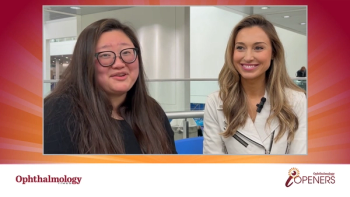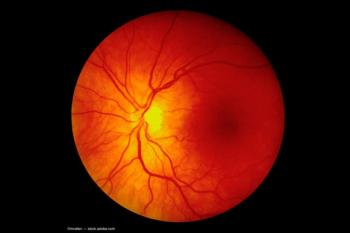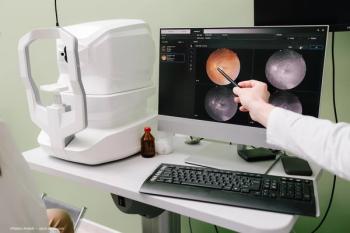
Retinal imaging plays diagnostic role in COVID-19 cases
Investigators have found that optical coherence tomography findings could prove to be a diagnostic tool for COVID-19.
Retinal imaging should be an important part of the diagnostic process in potential cases of COVID-19 as
Results of the study were reported by first authors Jose M. Ortiz-Egea, MD, and Jorge Ruiz-Medrano, MD, from the Department of Ophthalmology at Castilla La Mancha University in Albacete, Spain, and Puerta de Hierro-Majadahonda University Hospital in Madrid, Spain, respectively, and
The following case report1 supports obtaining OCT images for patients with suspected
A healthy 42-year-old caucasian male anesthetist reported acute development of a temporal relative scotoma in the left eye, the best-corrected visual acuity of which was 20/20.
Investigators noted that he had treated patients with COVID-19 over the prior 5 weeks. Most ocular findings were normal, with no discromatopsia or afferent pupillary defect.
Visual field testing showed no relevant findings associated with the focal loss of sensitivity, slit-lamp and fundus examinations appeared normal, and multimodal imaging showed or hypo- or hyper-autofluorescence in the area.
However, the investigators reported that a placoid, hyperreflective band at the level of the ganglion cell layer and the inner plexiform layer was seen in the swept-source OCT images. The outer retina was not affected at diagnosis and 1 month later.
The investigators noted that after the retinal examination, 7 days after symptom onset, the patient underwent an oropharyngeal swab test for SARS-CoV-2 RNA and an enzyme-linked immunosorbent assay (ELISA) to determine the immunoglobulin G and M levels.
A real-time reverse-transcriptase polymerase chain reaction was negative. ELISA testing and a third rapid antibody detection test performed 7 days after symptom onset were positive.
“The ocular signs and symptoms in COVID-19 cases are rarely reported, but may be underestimated, especially those that affect the retina and occur in asymptomatic or paucisymptomatic cases,” the authors concluded. “The current case of COVID-19 was diagnosed based on a retinal ophthalmic examination.”
---
Reference
1. Ortiz-Egea JM, Ruiz-Medrano J, Ruiz-Moreno JM. Retinal imaging study diagnoses in COVID-19: a case report. J Med Case Rep 2021;15(15) https://doi.org/10.1186/s13256-020-02620-5
Newsletter
Don’t miss out—get Ophthalmology Times updates on the latest clinical advancements and expert interviews, straight to your inbox.













































